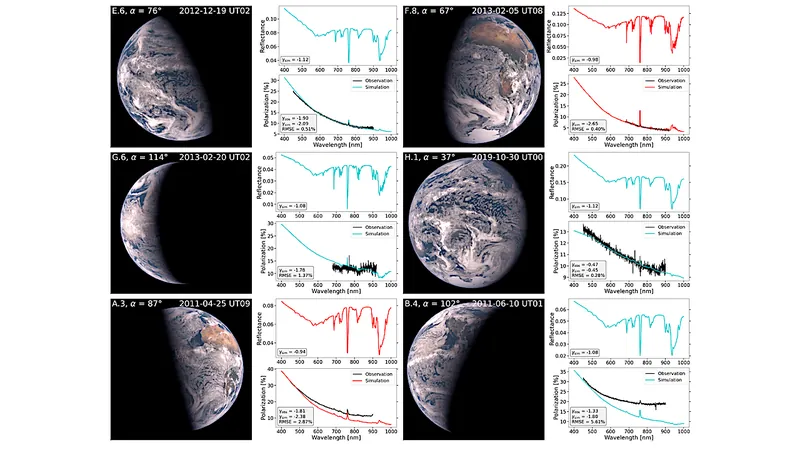
Earth as an Exoplanet: The Fascinating Insights from Earthshine Observations
2025-09-22
Author: Sarah
Unlocking the Secrets of Earth's Light from the Moon
Imagine spying on our home planet as if it were an alien world. Earthshine observations provide a groundbreaking glimpse of Earth from the Moon, shedding light on its characteristics just like distant exoplanets. By analyzing how Earth's light reflects and polarizes, scientists are gaining crucial knowledge that could refine future searches for habitable planets beyond our solar system.
A Decade of Innovative Observation
In a remarkable effort harnessing the power of the Very Large Telescope, researchers have compiled an extensive catalog of Earthshine polarization spectra collected over more than ten years. This unprecedented dataset captures a variety of scenes, weather conditions, and surface characteristics.
Revolutionizing Previous Models with 3D Techniques
Past attempts to analyze these spectra often fell short, unable to fully explain the observed polarization continuum. However, this new research introduces a sophisticated 3D model that incorporates cloud variability, diverse surface reflectivity, and ocean glint. The outcome? An impressive increase in the precision of the simulations compared to earlier models.
Delving Deeper: Understanding Water and Land through Light
One of the standout findings suggests that the spectral slope in visible light can differentiate between oceanic and mixed landscapes with a level of accuracy that basic filters cannot achieve. Strikingly, polarized light, especially at large phase angles, proves to be more effective in distinguishing oceans from land — a crucial advantage in understanding planetary surfaces.
Clouds Hold the Key
The research also establishes significant correlations between cloud characteristics and the polarized spectral slope, revealing the potential of these observations as diagnostic tools. This understanding could offer insights into the climate and environmental conditions on Earth-like exoplanets.
The Future of Exoplanet Exploration
This groundbreaking work emphasizes how polarization can reveal vital signs of life: oceans, lush vegetation, and a dynamic water cycle are all indicators of a potentially habitable world. As we look to the stars, this research not only enhances our understanding of Earth but also brightens the path for identifying habitable planets swirling around distant suns.




 Brasil (PT)
Brasil (PT)
 Canada (EN)
Canada (EN)
 Chile (ES)
Chile (ES)
 Česko (CS)
Česko (CS)
 대한민국 (KO)
대한민국 (KO)
 España (ES)
España (ES)
 France (FR)
France (FR)
 Hong Kong (EN)
Hong Kong (EN)
 Italia (IT)
Italia (IT)
 日本 (JA)
日本 (JA)
 Magyarország (HU)
Magyarország (HU)
 Norge (NO)
Norge (NO)
 Polska (PL)
Polska (PL)
 Schweiz (DE)
Schweiz (DE)
 Singapore (EN)
Singapore (EN)
 Sverige (SV)
Sverige (SV)
 Suomi (FI)
Suomi (FI)
 Türkiye (TR)
Türkiye (TR)
 الإمارات العربية المتحدة (AR)
الإمارات العربية المتحدة (AR)